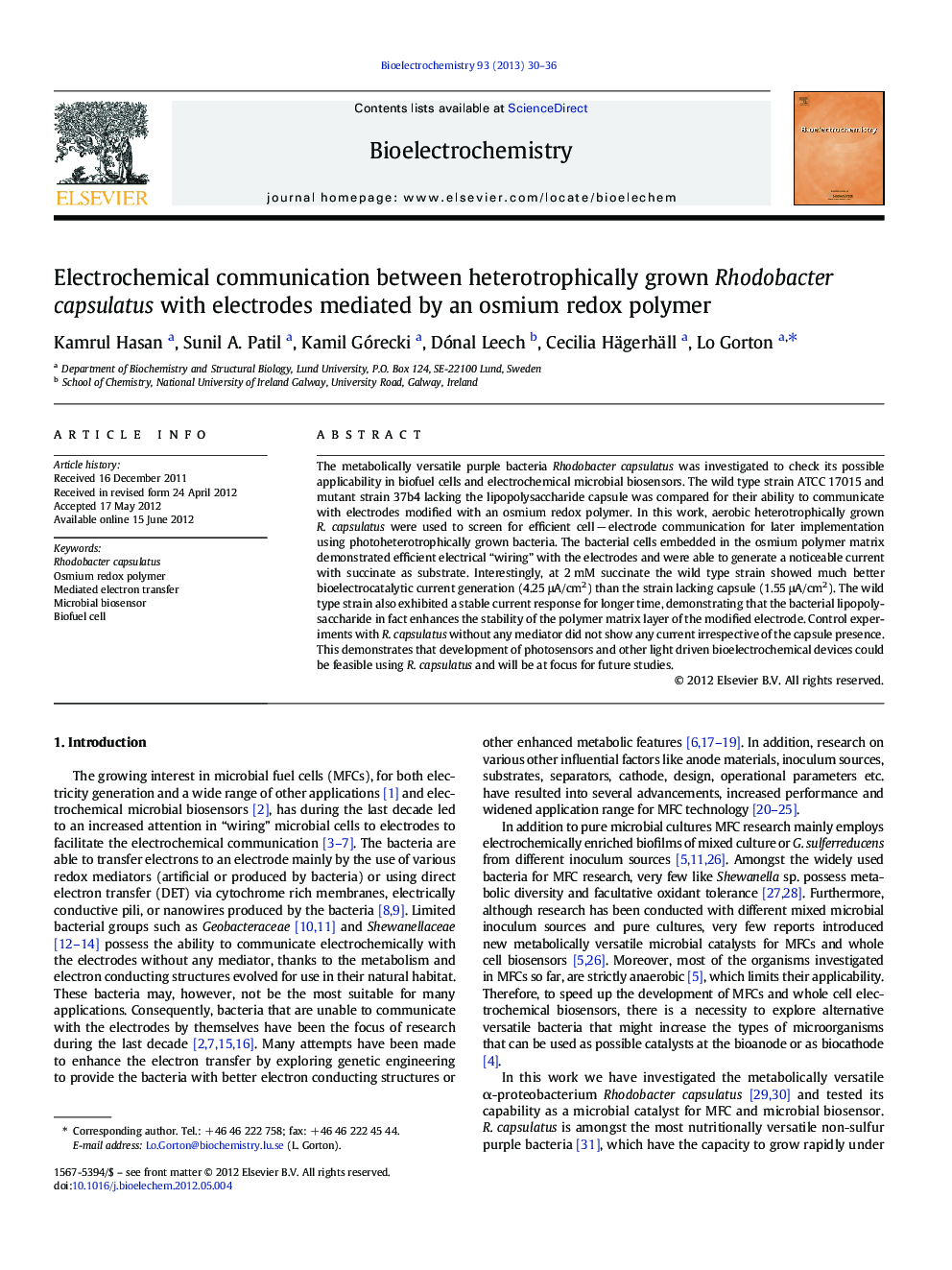| Article ID | Journal | Published Year | Pages | File Type |
|---|---|---|---|---|
| 1274133 | Bioelectrochemistry | 2013 | 7 Pages |
The metabolically versatile purple bacteria Rhodobacter capsulatus was investigated to check its possible applicability in biofuel cells and electrochemical microbial biosensors. The wild type strain ATCC 17015 and mutant strain 37b4 lacking the lipopolysaccharide capsule was compared for their ability to communicate with electrodes modified with an osmium redox polymer. In this work, aerobic heterotrophically grown R. capsulatus were used to screen for efficient cell − electrode communication for later implementation using photoheterotrophically grown bacteria. The bacterial cells embedded in the osmium polymer matrix demonstrated efficient electrical “wiring” with the electrodes and were able to generate a noticeable current with succinate as substrate. Interestingly, at 2 mM succinate the wild type strain showed much better bioelectrocatalytic current generation (4.25 μA/cm2) than the strain lacking capsule (1.55 μA/cm2). The wild type strain also exhibited a stable current response for longer time, demonstrating that the bacterial lipopolysaccharide in fact enhances the stability of the polymer matrix layer of the modified electrode. Control experiments with R. capsulatus without any mediator did not show any current irrespective of the capsule presence. This demonstrates that development of photosensors and other light driven bioelectrochemical devices could be feasible using R. capsulatus and will be at focus for future studies.
